Physical Address
304 North Cardinal St.
Dorchester Center, MA 02124
Physical Address
304 North Cardinal St.
Dorchester Center, MA 02124
The best 4K projector goes hand in hand with the advancement in picture quality: 4K isn’t just for the picky movie lover at home anymore. It has truly taken over HD as the norm for image quality and these projectors will take you there instantly – no matter where you’re watching or playing.
The release of the PlayStation 5 and Xbox Series X in late 2020 marked a shift in resolution, framerates, and visual clarity, as console launches usually do. Just like the Playstation 3 helped BluRay become the norm, 4K devices are now in even more homes and we’re truly in the 4K era. The best gaming projectors are no exception.
So if you’re aiming to upgrade your home cinema system, or looking to swap your TV for a big, beautiful picture from one of the top projectors, then these are some of your best options. They cover a variety of choices from all the well-known brands and fit a range of budgets. But keep in mind, if 4K prices are too high for you, there are still good projectors among the best portable projectors, and the best projectors for PS5 and Xbox Series X to look at which might lower it to HD to cut down the cost, for example.
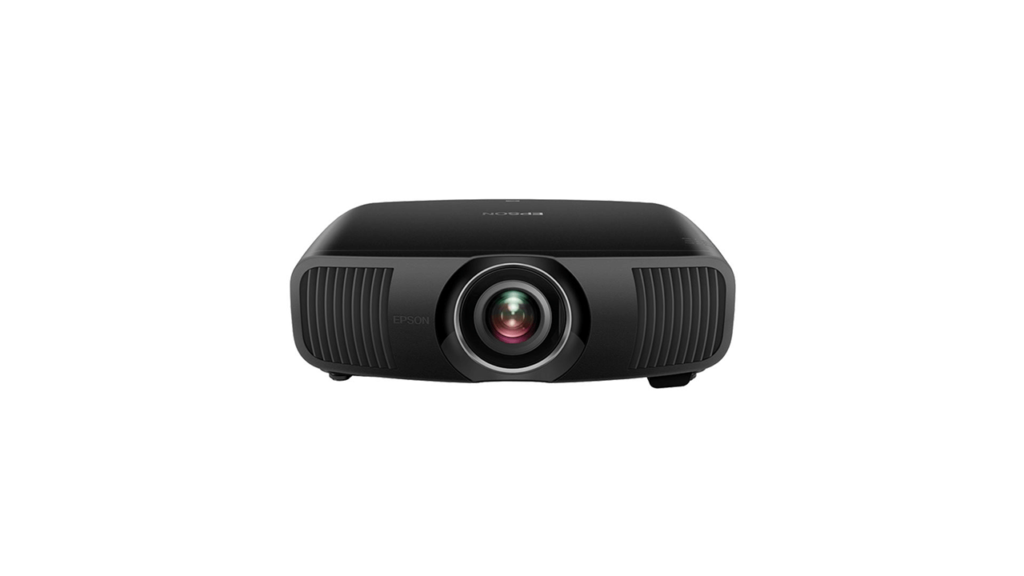
Pros
Cons
Epson has many excellent 4K projectors, but the Pro Cinema LS12000 really stood out in 2022. This is a great UHD device, putting image quality first over extra features to give a real home theater feel.
Design: The Epson Pro Cinema LS12000 is bigger than some 4K projectors out there, but its sleek curves and basic black color mean it can fit in almost any place. The standard throw gives you a lot of options in where you put your projector, and with all ports at the back, you can keep things clean.
Features: The LS12000 focuses on its video quality, which means you’re not paying for any extra features here. That’s a big plus for anyone who wants the best in 4K picture quality, but it’s important to note that there’s no built-in sound system or streaming apps. However, you do get a very fast 4K 120Hz HDMI 2.1 connection, as well as HDR10, 10+, and HLG tech to make all your games and movies look great.
Performance: The picture quality of this lens is amazing. You’re not only getting ultra-sharp UHD resolution with especially impressive detail in both light and dark scenes, but also a brightness of 2,700 lumens that can handle a variety of viewing conditions. With lots of customization options, this is a projector for true movie lovers or anyone looking to upgrade their gaming setup with a high-end investment.
Verdict: The Epson Pro Cinema LS12000 can handle just about any 4K movie or game you throw at it. It’s not the cheapest model on the market, but if you’re all about picture quality, it’s the best there is.
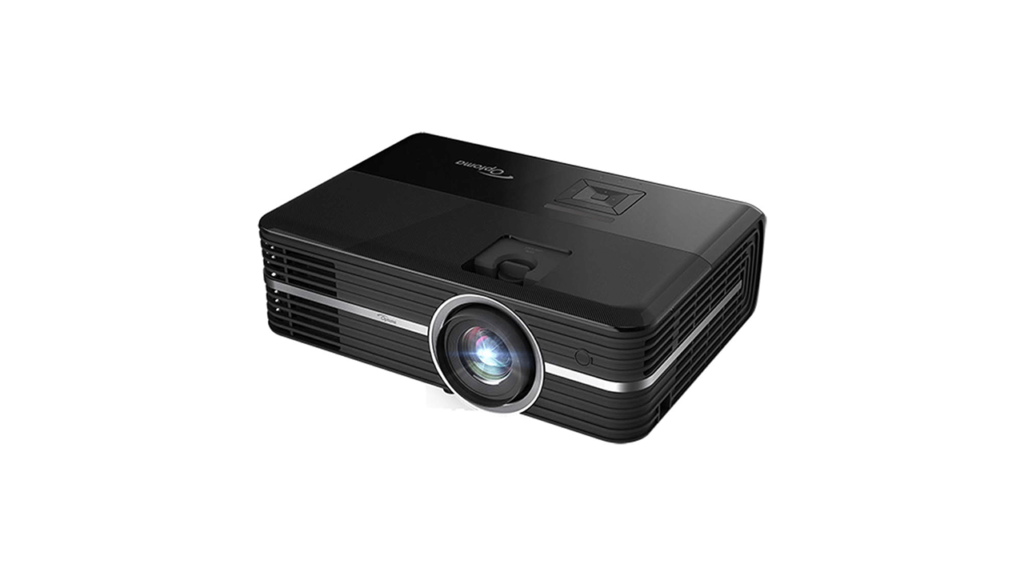
Pros
Cons
Sometimes, you might pay more for a well-known brand when buying the best 4K projectors. But, if you look beyond the famous names in home entertainment, you can find a good deal. Optoma is a brand that consistently offers great value projectors that can compete with the top brands.
Design: This Optoma model, unlike the more expensive Samsung model, has a more classic projector design. It’s a black box with a bulky look, grills around the edges, and a silver strip in the middle. There’s also a white model, but it’s harder to find right now. Despite its bold design, it’s light (5.2kg), making it easy to install.
Features: You need to connect this to a video source to play videos because it doesn’t have a built-in operating system for direct streaming. But that’s a minor issue considering the excellent picture quality you get for the price. The 51 model also works with Amazon Alexa and can display 3D images, although not many people might use this feature.
Performance: It delivers excellent color and deep blacks, and it handles fast motion well, making it great for action scenes. It also does a great job of upgrading non-4K images and even supports 3D (you’ll need to buy DLP link active shutter glasses for this) if you want to watch Avatar again before the sequels come out. However, you might need to close the curtains to get the best picture because it doesn’t perform as well in bright light.
Verdict: The UHD51 has been on the market for a few years now, so you can find some great deals on it. Even though ‘budget’ 4K still costs a bit, it’s a great investment if you don’t want to spend too much.
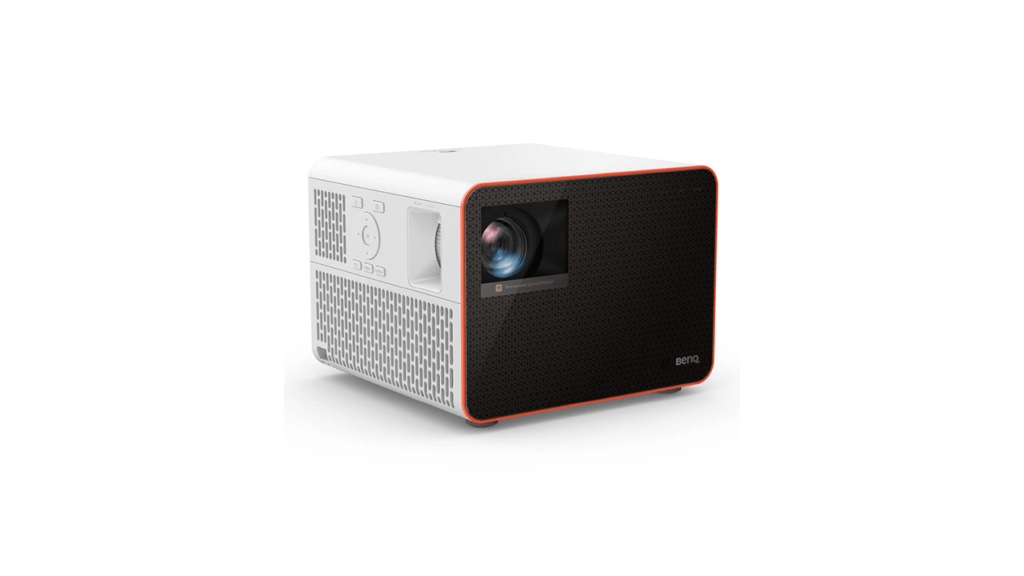
Pros
Cons
If you’re looking for a 4K projector with low latency for gaming, you should check out the BenQ X3000i. It’s not just good for games, but also for watching movies and TV shows.
Design: The X3000i is a big 4K projector. It’s tall and wide, which makes it look bulky. But that’s a small issue considering all the technology inside it. It’s not really meant to be mounted or hidden away. The design is clean, with a white plastic body and a black lens panel with a fun orange strip.
Features: The X3000i is the first to offer 4K gameplay with 16ms input lag at 60Hz (it can go as low as 4ms input lag if you adjust some image settings). BenQ designed it with all gamers in mind, especially role-playing gamers who want to be fully immersed in the amazing worlds of triple-A titles. The key feature is BenQ’s CinematicColour system, which reproduces colors incredibly well. The colors are very rich, especially the reds, blues, and greens in next-gen games. It has built-in streaming through an Android dongle, but some key apps are missing.
Performance: The X3000i has something for everyone. The low input lag makes playing first-person shooters a smooth experience, even when you’re moving fast. Bright party games like Fall Guys or Mario Kart look amazing, even in ambient light that can often wash out the colors on other projectors. It’s designed for gamers, but it’s also great for watching movies or TV shows, whether they’re bright Pixar films or gritty dramas. The detail in the dark colors is good for spotting an enemy hiding in the shadows in a shooter or following a fight scene in a DC movie.
Verdict: BenQ has set a new standard for projectors with the X3000i. It delivers some of the best 4K gaming images we’ve ever seen.
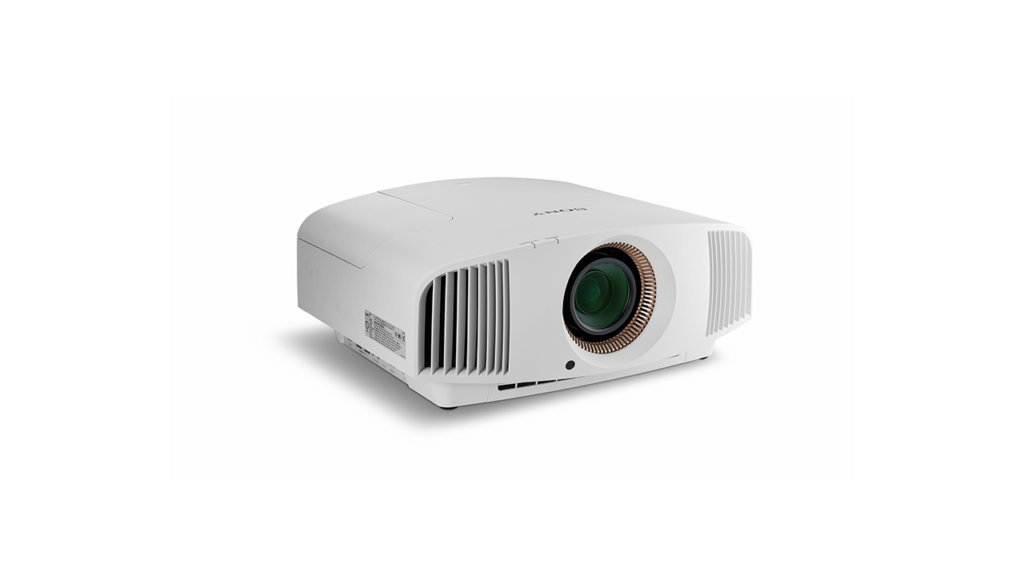
Pros
Cons
The Sony VPL-VW590ES is better than the older VW570, mainly because of the amazing X1 chip that comes from Sony’s Bravia TV tech.
Design: The VPL-VW590ES is big and heavy, like most 4K projectors. But this one is 14kg, which might be a problem if you want to hang it overhead. Still, its smooth corners and long rectangle shape are common in high-end 4K projectors, and it’s manageable if you have a strong bracket above.
Features: The Bravia tech is the main feature here, made for top-notch picture and upscaling. Besides that, you also get dynamic HDR for frame by frame rendering. A small issue is the lack of connections other than HDMI and USB, but if you’re spending this much on a projector, you probably have an amp ready for this, so not having built-in speakers might not be a big deal.
Performance: The X1 is a super fast processor that always works to give you an amazing picture quality – it checks each frame to make sure everything looks clear and smooth. It’s bright enough to give a great quality picture even with a lot of light around, and it has amazing color and contrast depth. It’s great for gaming with no noticeable input lag, and the wide landscapes of open-world games look amazing in a 4K image of over 100 inches – and so do the bright colors of a platformer. It shows incredible detail even in the darkest shadow, something few projectors can do.
Verdict: Yes, it’s expensive, but the Sony VPL-VW590ES is a top-of-the-line projector that really brings the cinema to your home and is worth the money if you can afford it.
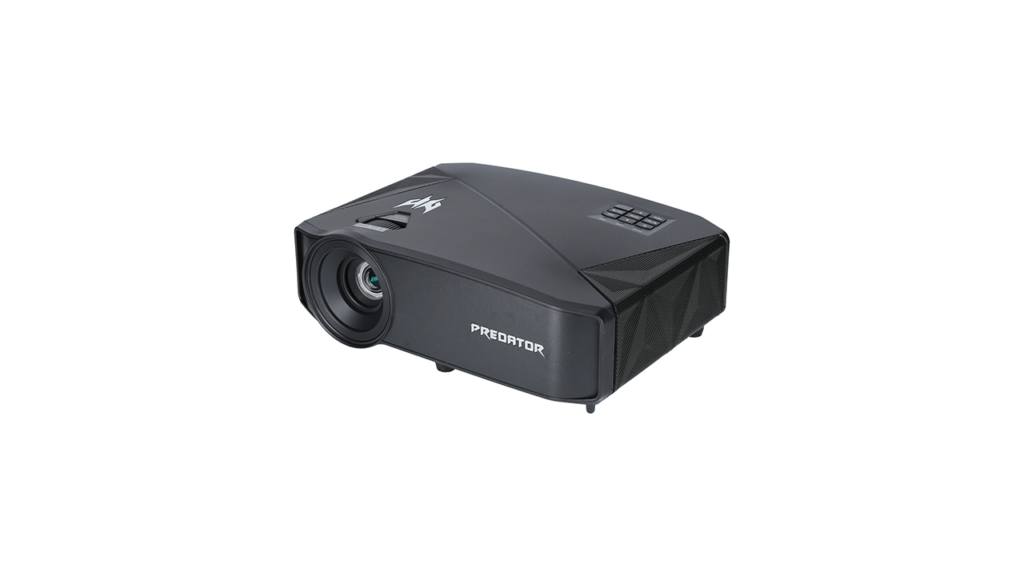
Pros
Cons
The Acer Predator GD711 is a 4K gaming projector. While the BenQ model above is our top choice for pure 4K quality, the Predator has some serious gaming features and performance.
Design: This is a gaming projector, no doubt about it. It’s clear from the large black body, with sharp lines, shiny logo, and big grills. This is a heavy-duty device that looks the part, so if you have a small space, you’ll need to figure out how to support its large size.
Features: Besides the excellent UHD resolution, there’s a super-fast refresh rate of up to 240Hz in 1080p for PC (120Hz at 1080p for consoles) and minimal input lag which we found makes this perfect for gaming. In our tests, games were super smooth, with no noticeable lag and even the fastest FPS stays clear as you move the camera around quickly. We found the 10W speakers to be thin and weak, but if you’re spending this much on a PS5 projector, you’re likely to want, buy, or already have a good sound system. A lack of zoom control is a bit confusing, meaning you have to set the projector size by where you place it, and unless your room fits the throw ratio you may need a ceiling mount to get it at the right distance. Also, while there’s a wide range of color palettes to choose from to enhance your viewing, some manual adjustments were needed to stop the picture from looking a bit faded.
Performance: Landscapes look rich, the bright game mode makes colors stand out and the dark game mode keeps detail in the shadows using the DynamicBlack technology. Video looks amazing too and makes the most of the 4K resolution the GD711 can output, with a wide range of modes giving you ideal setups quickly for the perfect color palette. Once set up, the GD711 is easily one of the best 4K projectors for gaming.
Verdict: The Acer Predator GD711 offers a well-rounded package, except for a few practical issues. However, its motion handling and variable refresh rate are top-notch, making it a must-see for competitive players.
The TV market has mostly moved to 4K, but home projectors have been slower to do so, even though there are now good options.
There are many technologies that can project a 3840×2160-pixel image. Sony leads the native 4K area with its SXRD models. These are usually big and, let’s say, a bit expensive – but they look great.
The most affordable models use single chip DLP and 3LCD technologies, which basically shuffle pixels to deliver a 4K image. The most common is the DLP UHD solution from Texas Instruments. While a DLP DMD (Digital Micromirror Device) only has 4.15 million mirrors, very fast switching and image processing allow it to project an 8 million pixel image. This method is called XPR (eXpanded Pixel Resolution).
Some fans argue that because of this, XPR projectors aren’t really UHD. But we give the tech two thumbs up. The image is clearly more detailed than that from regular HD projectors. If there’s a downside, it’s that the technology doesn’t support a wide color range. It works within a normal color space, often called REC.709. But that’s a small, almost unnoticeable price to pay considering their value for money.
There’s also been a change in lighting technology. While many projectors still use regular lamps to project their images, laser light engines and LED are becoming more popular. Both tend to run cooler and last for the product’s lifetime, so you won’t need to buy a new bulb every few years.
When you’re shopping for a projector to replace a big screen TV, you should think about its design, what kind of light it uses, how bright it is, how fast it refreshes, how big it can project, the operating system it uses for smart TV features, whether it supports HDR, the range of colors it can show, its contrast ratio, the ways you can connect to it, and the quality of its built-in speakers.
Just like regular TVs and monitors, a 4K projector uses about 8.3 million pixels (2,160 x 3,840) for each frame. The higher the resolution, the clearer and more detailed the picture will be, especially if the projector also has features like HDR and a fast refresh rate. Weinstein says, “A projector’s resolution shows you how clear the picture will be. A 4K image has four times more pixels than a 1080p image, so it shows a lot more detail.”
A top-quality 4K projector can create an image that ranges from 80 inches to 200 inches for a fair price (this price can change, depending on the brand and type of the projector). To get a similar image size from a regular 4K TV might cost a lot more, even thousands of dollars, especially if you opt for a TV with an OLED screen.
Apart from the cost, a regular TV is made to function flawlessly no matter how bright the room is. In contrast, with a projector, to get a clear image in full daylight, you’ll need a very high maximum brightness, around 3,000 to 4,000 lumens.
The brightness of a projector is crucial as it decides how much surrounding light can be in the viewing area while still producing a bright and clear image that doesn’t appear faded. On the other hand, the contrast of a projector affects the color precision and the amount of detail you will observe. So, both brightness and contrast play significant roles in the overall viewing experience.
For the optimal viewing experience with a projector, it’s best to use it in the darkest room possible. However, if the projector has a high enough brightness level (at least 3,000 lumens), it can still produce a bright and clear image, even in daylight or with some ambient light in the room. Therefore, when choosing a projector, look for one with the highest possible brightness rating. This will ensure the best performance under various lighting conditions.
Any projector can project its image onto a white wall or a white bed sheet hung on a wall. But for the best image quality and better control of ambient light, it’s recommended to use a screen of appropriate size that’s specifically designed for projector use. This will enhance the viewing experience by providing sharper images and better color accuracy. So, while a white wall or sheet can work in a pinch, a dedicated projector screen will offer a significantly improved viewing experience.